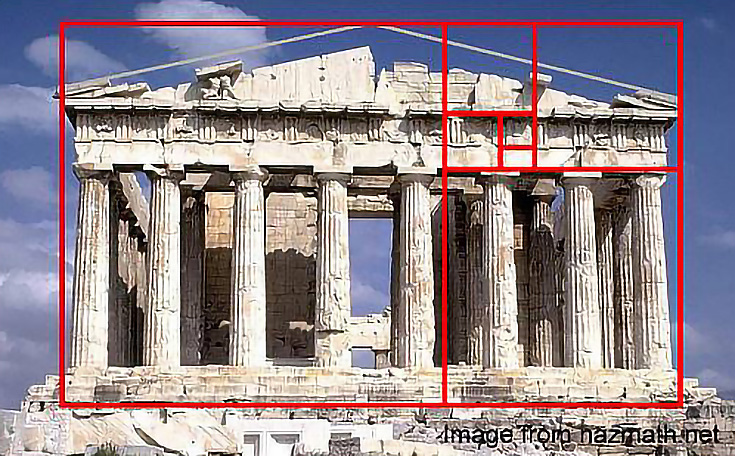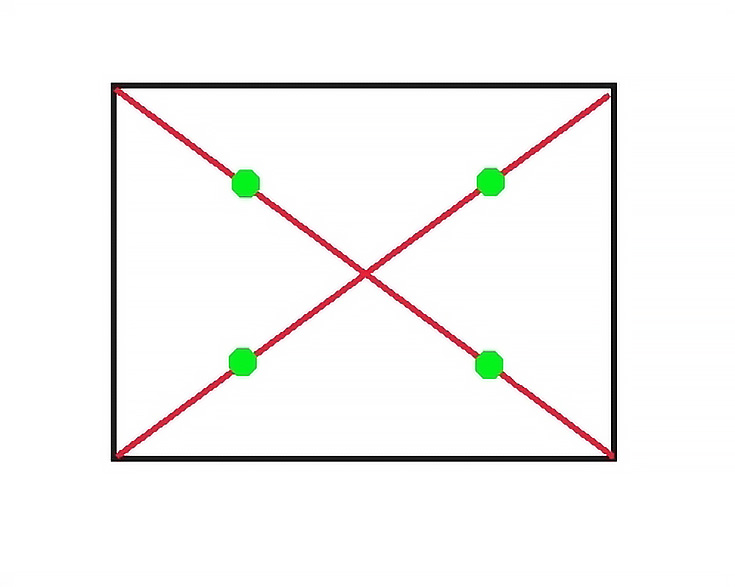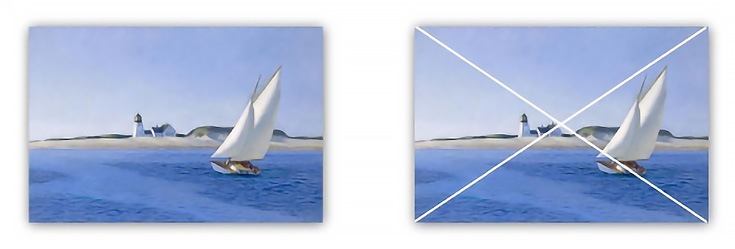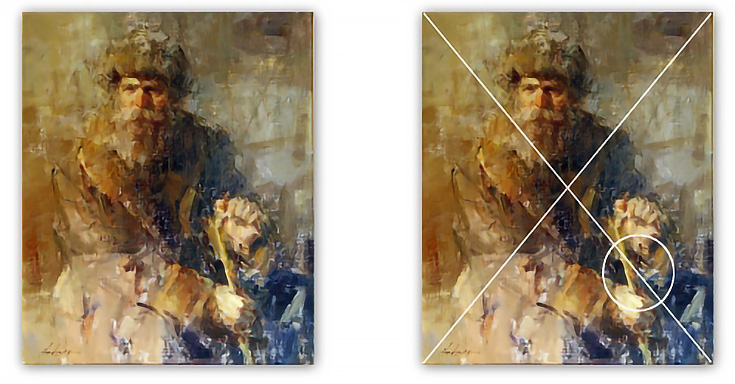There’s a mathematical ratio commonly found in nature—the ratio of 1 to 1.618—that has many names. Most often we call it the Golden Section, Golden Ratio, or Golden Mean, but it’s also occasionally referred to as the Golden Number, Divine Proportion, Golden Proportion, Fibonacci Number, and Phi.
You’ll usually find the golden ratio depicted as a single large rectangle formed by a square and another rectangle. What’s unique about this is that you can repeat the sequence infinitely and perfectly within each section.

If you take away the big square on the left, what remains is yet another golden rectangle. . . and so on.
The golden ratio in art and architecture
The appearance of this ratio in music, in patterns of human behavior, and even in the proportion of the human body, all point to its universality as a principle of good structure and design.
Used in art, the golden ratio is the most mysterious of all compositional strategies. We know that by creating images based on this rectangle our art will be more likely to appeal to the human eye, but we don’t know why.
Some scholars argue that the Egyptians applied the golden ratio when building the great pyramids, as far back as 3000 B.C.
In 300 B.C. Euclid described the golden section in his writing of Euclid’s Elements, and before that, around 500 B.C., Pythagoras claimed that the golden ratio is the basis for the proportions of the human figure.
The ancient Greeks also used the golden ratio when building the Parthenon.
Artists throughout history, like Botticelli and Leonardo DaVinci, have used the golden rectangle, or variations of it, as the basis for their compositions.
Here’s da Vinci’s painting, The Last Supper, with golden sections highlighted.
Golden rectangles are still the most visually pleasing rectangles known, and although they’re based on a mathematical ratio, you won’t need an iota of math to create one.
How to make a rectangle based on the golden ratio
If you want to use a golden rectangle in your own compositions, here’s how you can make that happen without any special tools or mathematical formulas.
1. Begin with a square, which will be the length of the short side of the rectangle.
2. Then draw a line that divides it in half (forming two rectangles).
3. Draw a line going from one corner to the opposing corner of one of those halves.
4. Rotate the top point of that diagonal line downward until it extends your square.
5. Finish off the rectangle using that diagonal length as a guide for the long side of your golden rectangle. It’s that simple.
Visual points of interest inside a golden rectangle
Any square or rectangle (but especially those based on the golden ratio) contain areas inside it that appeal to us visually as well. Here’s how you find those points:
1. Draw a straight from each bottom corner to its opposite top corner on either side. They will cross in the exact center of the format.
2. From the center to each corner, locate the midway point to each opposing corner.
These points—represented by the green dots in the diagram above—are called the “eyes of the rectangle.”
How to use the “eyes” of a golden rectangle
One strategy often used by artists is to locate focal points or areas of emphasis around and within these eyes, creating a strong visual path in their compositions.
Edward Hopper’s composition, below, sets the sailboat right on the lower right eye (with the tip of the sails extending nearly to the upper right eye).
In this painting, Carolyn Anderson places her subject’s hands around that spot too.
J.M.W. Turner uses the angle of his waves to create an arch that circles through the lower right and lower left eyes.
Notice that the focus of the scene is then captured within all four eyes, too.
How you use the golden ratio or these “eyes” to direct a viewer’s visual path is limited only by your imagination. Try using the eyes of the rectangle in your next painting and see what difference it can make in the strength of your composition.
This post may contain affiliate links.







